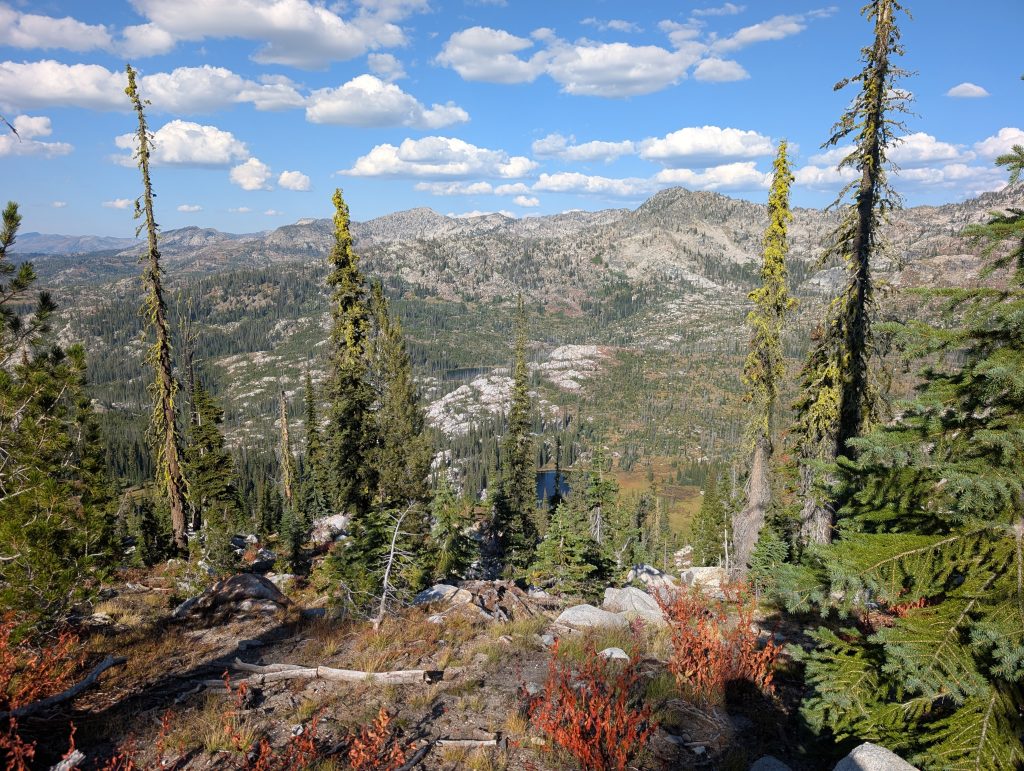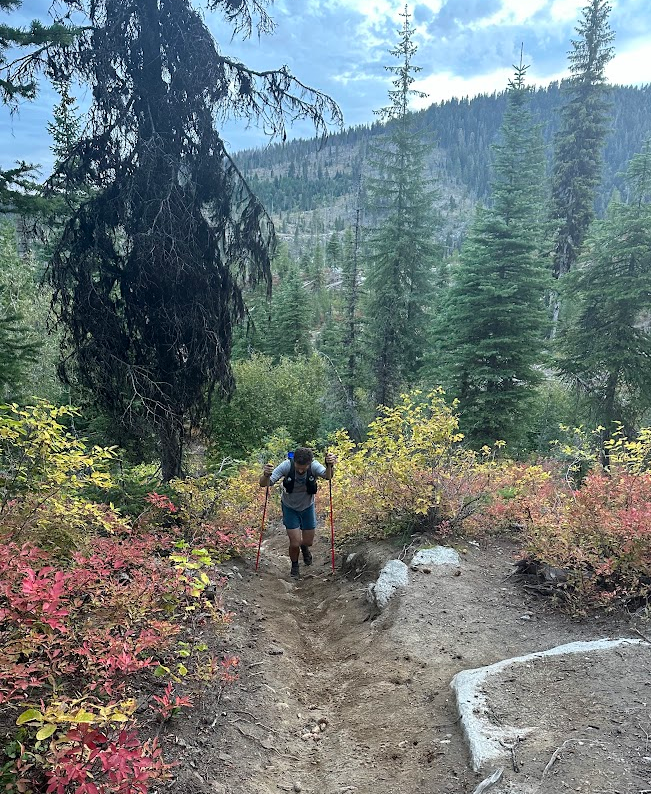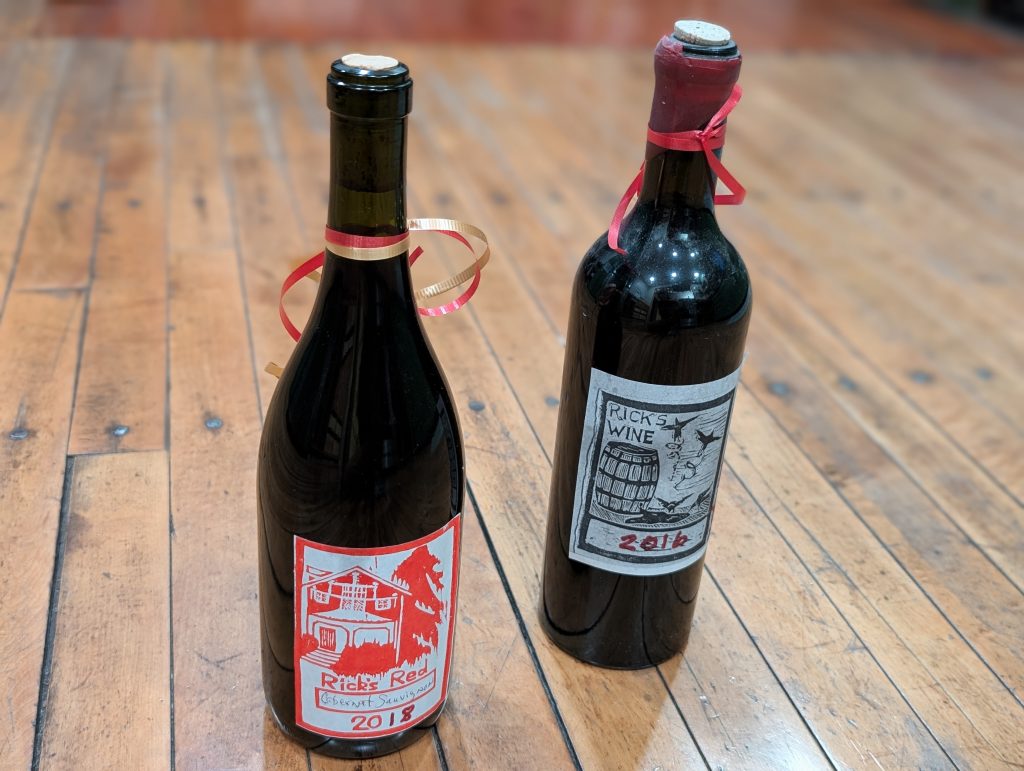
I got off of the IMTUF waitlist about a month before race day- it wasn’t the 100 that I expected to run at the beginning of the summer, but I loved my first two races there, and I was excited to try out the new (since 2020) course. My “training” was pretty normal for me- I averaged 40-45 mpw, and then had a couple weeks of 55 mpw in August, with 10-12k feet of elevation gain. About once a month I got out on a long run of 30-45 miles with lots of elevation.
My goal at this race was 26 hours- in 2019 I ran 25:40ish here, and though the course has gotten harder, it’s also gotten a few miles shorter. I’ve run 3 other 100s since then, and they’ve all gone well, but also I’m 46 and not 40, and running fewer miles training than I used to. I was hoping to run a very even split race, getting to the mile 55 aid station in about 13 hours, and running the remaining 45 (slightly easier) in another 13 hours.
I got up Saturday morning at about 4:45, after about 6 hours of sleep (for the love of god, please do not bring your loud anxious dog to camp the night before a race!). I made myself a cup of fully caffeinated coffee for the first time in 2 weeks, spent my time in the porta potty line, and lined up for the race start with my friend Garret. The race started at 6:08, an hour before sunrise, but clear skies and temps fine for shorts and a light top (high 30s probably). Garret and I chatted and ran together for a couple miles, then he went off ahead. I loved Jughandle Mountain and the talus scramble down to Lake Louie, and then had a nice run downhill to Lake Fork (Mile 20), and was just a few minutes ahead of planned splits at both spots. I grabbed an extra water bottle and headed out.
I had forgotten the size of the climb up Falls Creek, but once it started I was grateful for the extra water and my big wide brim hat- though I’m well acclimated to heat, the temps in the 80s felt roasting- long, dry, exposed trails above 7,000 feet were difficult for everyone I saw. I ran out of water and was having a hard time eating the dry food I had a couple miles before the next aid station (South Crestline, Mile 30). I saw Garret there, but I took 10 minutes drinking water, eating an otter pop, and making sure I was ready for the Crestline section. I cooled off a little extra in the creek a half mile out of the aid station. I was just behind my goal pace at this point, but I was moving slowly at that point (about 2:00 PM).
Crestline was more beautiful than I had remembered, but also more difficult to keep a good pace- the terrain was rocky for every step and there was no water to cool off with. The 7 miles to the next minimal aid station crawled by. After that next aid station, there was finally a creek, which I laid down in for a couple minutes, cooling off. After that I started to feel more reasonable, and there were slightly more spots to cool off with water. I caught up with Garret at some point, and we spent an hour or two talking, which made the miles pass easily. North Crestline came at mile 47, 6:36 PM- I was more than an hour later than my race plan, but the temps were finally cooling off, and I had downhill ahead of me. It seemed like there were a lot of people sitting in the aid station, and I think I must have passed half a dozen by getting in and out quickly, I think I took only water and pickles there. I passed another half dozen or so on the way down to Upper Payette Lake (mile 56), and I got in just before I needed a headlamp, at about 8:15. Someone I know from a previous race, Jonmark was there too. I had a caffeine pill, a coke, and left with a bag of pierogies and tater tots. I started out hiking and eating, but soon I put on some music and started running up the trail to Duck lake. As the caffeine and potato kicked in I kept the running going even on the uphill sections, and passed a few more runners. After Duck Lake, there’s a nice downhill road section to get to Snowslide (mile 70). I downed a whole Mocha Frappuccino, which I think was a bit much, especially along with a piece of quesadilla and some cookies.
I knew I was going to be crawling up the steep rocky climb, and so I wasn’t too upset at getting passed by a couple other runners and having some miles that took 35 minute or so. I got back on track after the pass, and ran reasonably well down the long gentle descent to Lake Fork (mile 82). Even though I had been running well, I was about 1:25 behind my goal pace. I had stopped caring about this 16 hours before, but it’s an interesting reference point. Just a few days before the race, my friend Remi had to drop due to injury, and it worked out that his wife Nu volunteered to pace me from Lake Fork to the finish. Nu helped me get some broth, pizza, and some gels to pack for the last 18 miles and we set off at 4:00 AM. Nu was an exceptional pacer- encouraging, leading with an ambitious pace that I did my best to live up to, and reminding me to eat often. I didn’t realize how sluggish my thinking had become until she joined me. I barely talked for those last 18 miles- I was working hard enough that I was breathing hard the entire time. I’m not a great climber, but I was moving pretty well, and after we passed Boulder Peak and started the descent I loosened up and started passing a handful more people.
We got to the final aid station, Boulder Lake Dam, at 7:26 AM. I had just told Nu that I didn’t think it was worth the risk to eat any more gels, so I took some carb drink and we kept moving, with another runner leaving the aid station just a few seconds later. I had made up a lot of time on the last section, and I wanted to finish strong even though 26 hours was out of reach. I gave it everything I had on those last 5.7 miles, and my legs were feeling strong. My lungs were barely complying, I think I sounded like I was running an 800m race for the last 4 hours. It looks like I had the fastest split for that last section, about 1:03 for a mix of uphill and downhill trails to the finish line. 26 hours, 20 minutes. I’m proud of that race- I slowed down during the afternoon, but quickly got things back on track in the evening, and then gave it everything I could for the last 4.5 hours and finished strong.
Gear stuff: wore my favorite ever shoes, Merrell MTL Long Sky 2 Matryx. They were brilliant the whole way. I twisted my ankle painfully once on the Crestline, but otherwise I felt sure footed for every mile. I wore light gaiters too, I still had to empty gravel out of my shoes once at Lake Fork. Other key things: a big wide brim sunhat and arm sleeves plus a very light meshy t shirt kept the heat manageable. 1.5 liters water was barely enough for the long stretches on this course, if I had any really slow spots I would have been wanting another bottle. I used my poles a lot.
Food stuff: 2/3 of what I ate was either my homemade drink mix that I had a bottle of at almost every aid station, or gels (half and half Gu that I had brought and Carb Fuel that the race provided). Plus a few SIS gels that Nu gave me for the last section, those were definitely the easiest to eat. I supplemented that food with cookies, pierogies, pizza, a couple chewy granola bars, cups of coke, etc as it looked good. No stomach issues.



